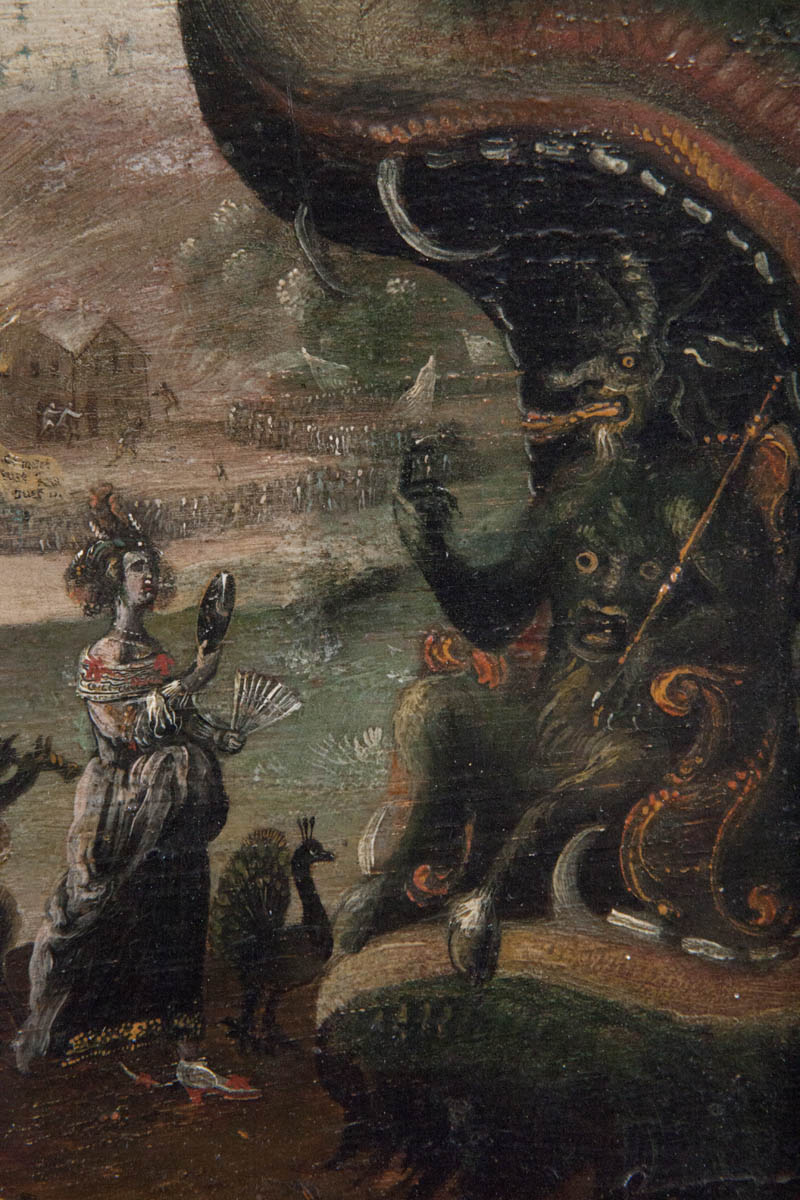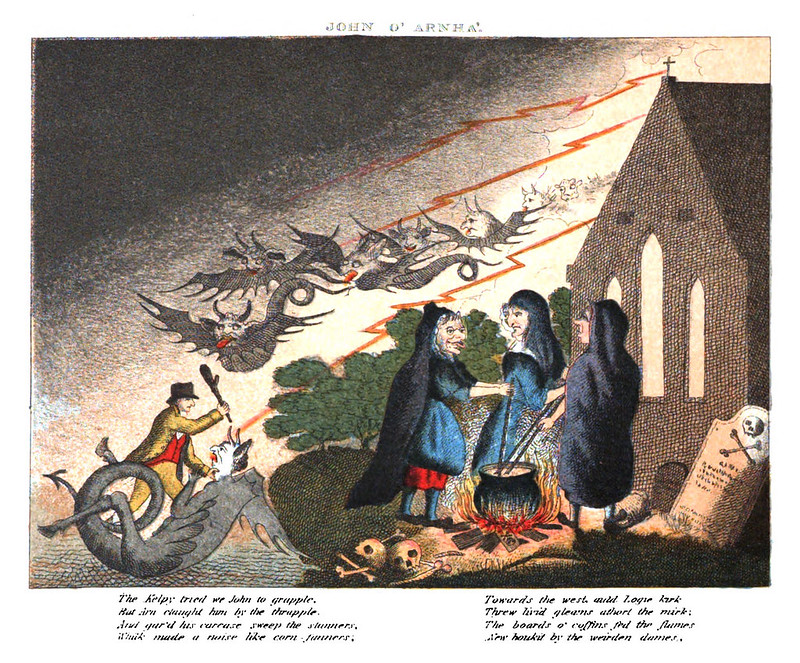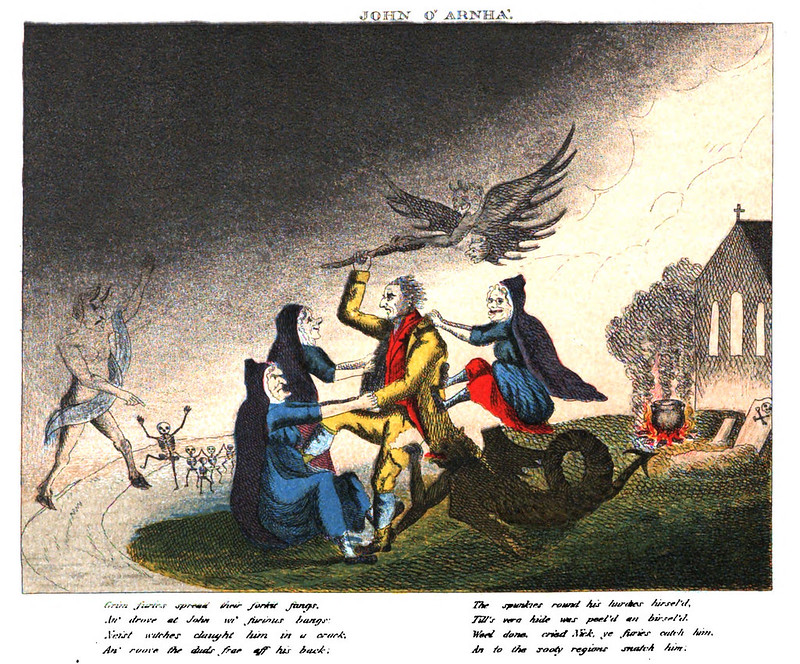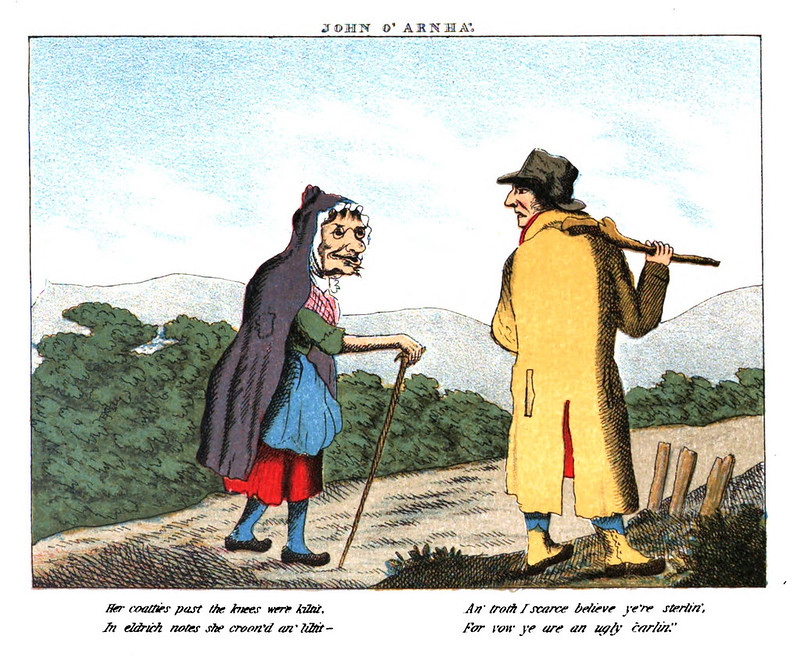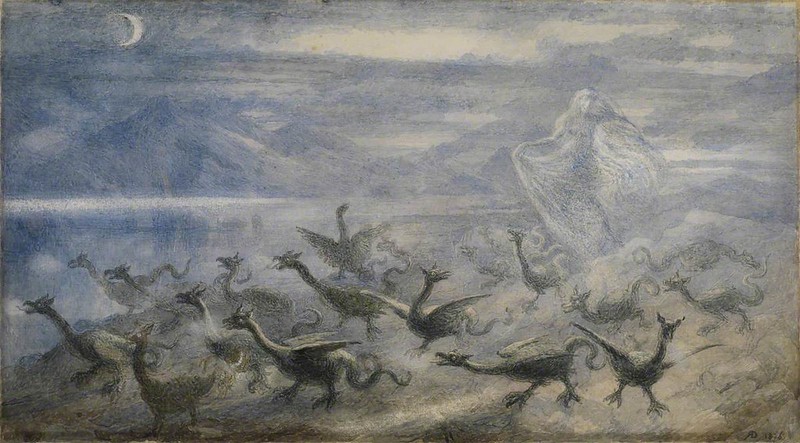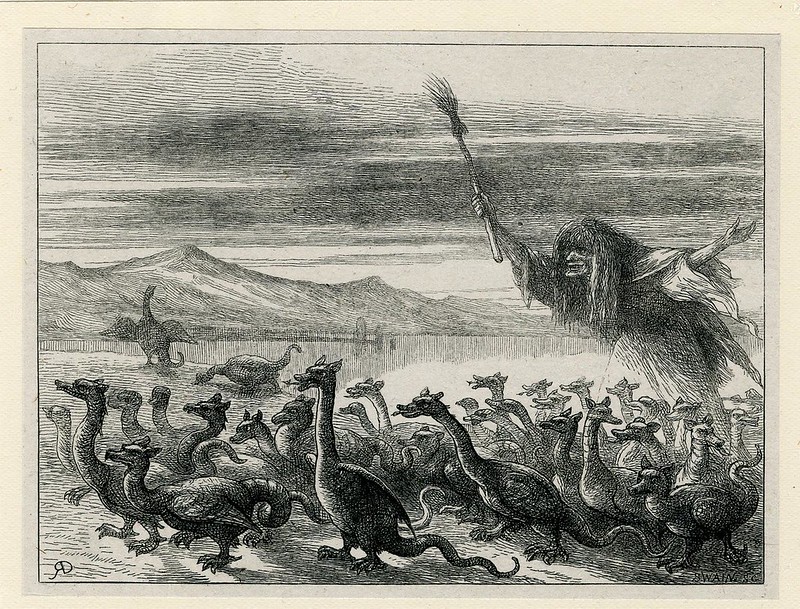
Most Lovecraftian investigative horror is about preventing the apocalypse, about preventing the disaster which would end the world as we know it and instigate the fall of mankind, which would arise because the Stars have come Right, and some powerful entity—god?—of the Mythos or the Unnatural has appeared or been summoned to unleash a hell hitherto unimagined. Whole scenarios and even campaigns have been dedicated to preventing such an occurrence, but what if it did? It is a question that devotees of the genre have constantly asked themselves, and over the years it has been visited a handful of times. First in print with
End Time, Doctor Michael C. LaBossiere’s Miskatonic University Library Association monograph which took humanity off of Earth and out into the universe following the end of the world, whilst the more recent
Cthulhu Apocalypse from Pelgrane Press and
Fate of Cthulhu from Evil Hat Productions answered the question in very different ways. The former by presenting the ‘Apocalypse Machine’, a tool/flowchart that provides the means to build an apocalyptic disaster and track its effects on both mankind and the planet, the latter presenting the apocalypse as something which could be stopped by going back in time. The latest entry into this subgenre is the
Apocthulhu Roleplaying Game.
The
Apocthulhu Roleplaying Game is published by
Cthulhu Reborn, best known as the publisher of the well-received
Convicts & Cthulhu: Call of Cthulhu Roleplaying in the Penal Colonies of 18th Century Australia. It explores futures and futures past—the Post-Apocalyptic worlds it posits all stem from the modern world, from the Victorian era onwards—in which the calendar has turned and Great Cthulhu has risen from his slumber under the Pacific and the coasts washed over with the oceans and strangely batrachian creatures; in which the Black Pharaoh was restored in Egypt and all became enthralled to his dark worship; in which the Black Goat of the Woods with a Thousand Young strides out of the deep jungle and the gifts the world with a rewilding of such fecundity that it boils over with rabidly radical births that spawn change after change; in which strange fungoid insects appear with promises of great gifts and new technology, only to enslave mankind in rapacious drive to strip the planet of its resources, including humanity itself; and in which Serpentine Humanoids are awoken from their aeons’ old slumber to reclaim their ancient empire and reclaim the planet from the primitive ape descendants which have stolen it in their absence.
Such disastrous turn of events may have only happened recently, they may have happened hundreds of years of the past, but as with many imagined Post-Apocalyptic worlds, the survivors are forced to pick over the bones of former civilisations and societies and compete with other survivors for scare resources in order to merely get by, let alone attempt to build a better future. Yet in a future where the forces of the Unnatural run wild, the survivors must contend with the knowledge of what exactly happened being all but lost, the lawless of the new world, with cultists and devotees of the Unnatural reveling in the worship of their true masters and their victory over mankind, and with confronting both devotees and masters, the resulting shocks to their psyche likely to claw at the bonds forged with family and community, if not drive them insane.
It should be noted that the
Apocthulhu Roleplaying Game is both a roleplaying game of its very own and not a roleplaying game of its very own. It is not a roleplaying game of Lovecraftian investigative horror
a la Call of Cthulhu, Seventh Edition or
Delta Green: The Role-Playing Game, but somewhere in between and hewing towards the latter rather than former. It is a percentile driven roleplaying game, but not a
Basic Roleplay variant. Rather it has been written under an ‘Open Game Licence’ much like
Delta Green: The Role-Playing Game. It is not a Mythos roleplaying game in the sense that it does not simply replicate entity after entity, race after race of the Mythos or the Unnatural. In fact, it limits what entities it can mention to those which are out of copyright and points the Game Moderator in the direction of both
Call of Cthulhu, Seventh Edition and
Delta Green: The Role-Playing Game, as well as
Trail of Cthulhu, as ready sources of such things, as well as spells and Mythos tomes (and that is in addition to the possibility of borrowing the ‘Apocalypse Machine’ from
Trail of Cthulhu). Being written under an ‘Open Game Licence’ also means that th
ere is a wide number of shifts in terminology to be found in the Apocthulhu Roleplaying Game, such as Rituals for spells and Tomes of Terror for Mythos tomes. These shifts are no more than a simple step to the left though, and the adjustment for a Keeper and her players from any other roleplaying game of Lovecraftian investigative horror will be relative slight. As much as the
Apocthulhu Roleplaying Game encourages reference to those other earlier works, it does stand alone, and it does something further, it presents a future—or futures—of those games if the Investigators fail…
A Survivor in the
Apocthulhu Roleplaying Game has six statistics—Strength, Constitution, Dexterity, Intelligence, Power, and Charisma, all ranging between three and eighteen. Willpower represents a Survivor’s mental fortitude and drive, and is equal to his Power. Willpower Points are lost when a Survivor attempts to suppress his mental illness, is exhausted, attempts to resist persuasion, suffers emotional burnout, or fuel unnatural phenomena—such as casting rituals. Besides a range of skills and a Sanity score, both rated as percentage values, a Survivor has Resources and Bonds. Resources, rated between one and twenty, represent supplies and personal possessions, their value determined by a Survivor’s Archetype (or Occupation), but can be increased at the cost of skill points. Bonds come in two types. Individual Bonds represent a Survivor’s relationships with friends, family, and so on, and are each equal to a Survivor’s Charisma, whilst his Community Bond represents the strength of the connection with a group and is equal to half his Resources rating. Both Bonds and Resources can be tested during play like statistics and both can change over time through play.
To create a Survivor in the
Apocthulhu Roleplaying Game, a player rolls for his statistics (or chooses from an array), selects an Archetype, calculates his Resources and selects his Bonds. Archetypes are divided between those of the Recent Apocalypse, such as Former Military or Former Student, and those who Post-Apocalypse-Born, such as Muscle and Technology Salvager. Each recommends a particular statistic, grants some set skills and some further options, all at a set value, plus staring Resources and number of Bonds. A player can also customise his Survivor’s skills with extra Skill Point Picks. A player has ten of these, each of which adds twenty percentile points or they can be sacrificed to increase a Survivor’s level of Resources. A Survivor can also have more depending on the harshness of the post-apocalypse, but these can only be assigned to Post-Apocalypse skills, such as Scavenge or Survival.
Deved, Son of Bunker 242
Law Giver
Age 19
STR 14/70 (Wiry)
CON 12/60
DEX 13/65 (Agile)
INT 14/70 (Perceptive)
POW 15/75 (Determined)
CHA 17/85 (Magnetic)
Hit Points 13
Damage Bonus +1
Willpower Points 60
Sanity Points 60
Breaking Point 45
Mental Disorder: Dendrophilia
Bonds
My father, Commander of Bunker 242 17
Old Man John, Keeper of the Statutes 17
Nency, friend and companion 17
Community (Bunker 242) 14
Resources 10
Skills: Dodge 50%, Firearms 40%, Insight 70%, Law (Regulations According to Bunker 242) 60%, Melee Weapons 50%, Persuade 80%, Post-Apocalypse Lore (Fecund Forest) 40%, Research 30%, Scavenge 50%, Search 60%, Survival (Fecund Forest) 30%, Technology use 40%, Unarmed Combat 60%, Unnatural 20%
Mechanically, the
Apocthulhu Roleplaying Game is a percentile game. The results of any test—statistic or skill related—can be a critical success, success, failure, or fumble. A critical success is a result of one or doubles up to the value of the statistic or skill being tested; a success is a roll equal to or under the statistic or skill; a failure is result over the statistic or skill; and a fumble is a result of double zero or doubles above the value of the statistic or skill. The deadliness of the
Apocthulhu Roleplaying Game is reflected in the Luck mechanic, which is a straight 50% roll and many weapons, such as grenades or submachine guns possessing a Lethality percentile rating. If an attack is successful and the Lethality roll is also successful, the target is killed straight, and even if failed, the dice results of the Lethality roll are added together and inflicted as damage, so the larger the failure, the more damage inflicted!
The Sanity mechanics in the
Apocthulhu Roleplaying Game are similar to those of the
Delta Green: The Role-Playing Game. Sanity can be lost through exposure to three sources—Violence, Helplessness, and the Unnatural, and in the case of Violence and Helplessness, a Survivor can become inured to such sources, though this comes at cost to their personality and their Bonds. If a Sanity test is failed, a Survivor suffers from Temporary Insanity, and will either Flee, Struggle against the source of the insanity, or Submit and collapse. When a Survivor’s Sanity is reduced to below his Breaking Point—equal to four fifths of his starting Sanity score—the effects of the Sanity loss are not temporary, the Survivor gaining a Mental Disorder. The Mental Disorder can be triggered by further exposure to whatever caused it in the first place. Lost Sanity can be recovered by interacting with a Bond, defeating Unnatural creatures, destroying accounts of the Unnatural (which sets up a tension between the need to study such accounts in order to destroy them and the need to destroy the tomes to remove them from the world), fulfilling personal goals, and looking after others. The last two are conducted during periods of Downtime which follow any investigation into the Unnatural and narratively serve as a counterpoint to the horror which has gone on before.
In addition to rules for confronting the Unnatural, researching Tomes of Terror, and handling Supernatural Effects just as you would expect for a roleplaying game of Lovecraftian investigative horror, the
Apocthulhu Roleplaying Game also includes rules for living and surviving in the apocalypse. These include rules for scavenging and jury-rigging found technology, resource scarcity, vehicles, and heavy weapons, all mainstays of the Post Apocalypse genre. It also integrates the effects of the Post Apocalypse futures in sanity. Each Post Apocalypse is graded on its degree of Harshness—either Normal(ish), Harsh, Very Harsh, or Nightmarish. The greater the degree of Harshness, the lower a Survivor’s beginning Sanity and the greater the likelihood of his beginning play with a Mental Disorder. This is offset by more skill adjustments and increased statistics during Survivor creation. For the Game Moderator, the
Apocthulhu Roleplaying Game poses a number of questions such as, “What event triggered the Apocalypse?”, “What changed?”, “Is there any hope?”, and so on, which answering should ideally spur the creation of an Apocalypse of her own. In addition to this, the
Apocthulhu Roleplaying Game provides eight example Apocalypses, each very different. For example, in ‘Apocalypse 1: The Stars Turn, Turn, Turn’, the stars have come right and multiple entities of the Mythos stalk the Earth, whilst in ‘Apocalypse 2: Nyarlathotep Unmasked’, the failure to prevent a summoning off the coast of China in the 1920s—in a knowing nod to
Masks of Nyarlathotep indicative of the
Apocthulhu Roleplaying Game’s potential role as a sequel—pushed the world into a nuclear strike and nuclear winter. Each of the eight Apocalypses provides answers to the eight questions plus some threats and tomes of terror, but is really only a snapshot of the Apocalypse in question, ready for further development upon the part of Game Moderator.
The Apocthulhu Roleplaying Game also comes with a campaign setting plus two quite lengthy, and very different scenarios, which together showcase the possibilities of the Lovecraftian-Post-Apocalypse genre. The campaign setting is an adaptation by Kevin Ross of William Hope Hodgson’s 1913 novel,
The Night Land. Set millions of years into the future, this has the last of humanity surviving under a dwindling sun in the Great Redoubt, an eight-mile high pyramid, watched over by the leviathan Watchers, waiting to be able to crack open the Great Redoubt and consume the souls of the last of mankind. Although due to be developed into a full campaign setting of its own from Cthulhu Reborn, it comes with everything that a Game Moderator would need to get started. It covers technology and life in the Great Redoubt, psychic powers, and the geography and threats and allies of the Night Land, plus several scenario hooks. What is interesting about the setting is that although
The Night Land has also been acknowledged as an influence upon H.P. Lovecraft, it has never been translated into a gameable setting before, primarily because, as Ross explains, the novel is impenetrable. The result of his efforts though, is a fascinating campaign setting, in some ways more of a Science Fiction setting akin to that of Marcus L Rowland’s
Forgotten Futures, but combined with a terrifying and weird mythos of its very own.
The first of the two scenario’s in the
Apocthulhu Roleplaying Game is ‘Kick the Can’ by Jeffrey Moeller, which is set in one of the earlier example Apocalypses given in the book, ‘Apocalypse 4: The Firelands of Melqart’. It takes place a year after civilisation has been reduced to ashes by a rain of fire following a prophecy by the weird cult-like, Church of Melqart. The Survivors, each of whom was initiated into the Church of Melqart, have spent the last year in a bunker and emerge into the ash-laden world because their supplies are running low and because they received a summons from the Church of Melqart to come to Washington, D.C. to participate in a great ceremony. As the Survivors make their way towards the capitol, they will discover some of the secrets of the apocalyptic event and the Church of Melqart, all of which point to a greater catastrophe to come. The scenario is linear, but has the scope for the Game Moderator to add her own scenes and the potential to become something of a slog as the Survivors cycle their way across America to Washington, D.C. Another problem is that it involves graphic, violent acts towards women and children, and whilst the
Apocthulhu Roleplaying Game is a horror game, this may be outside of the players’ comfort zones. So, at the very least, the Game Moderator will want to establish that the players are fine with this in the context of the scenario or at least alter some of the more graphic elements. Otherwise, ‘Kick the Can’ is a solid one-shot with quite a lot of information and detail to it.
Similarly, Jo Kreil’s ‘A Yellow and Unpleasant Land’ will require some discussion with regard to the degrees of debauchery it involves and to what degree the Game Moderator wants to describe them. The scenario is set in Victorian England in the 1890s following multiple performances of a play called
The King in Yellow, including for the late Queen Victoria, which saw the Yellow King come to Earth and corrupt the morals of every upstanding Englishman. This is an apocalypse of decadence and debauchery rather than death and destruction, one which the Survivors can hope to overturn if they follow the instructions of Myrddin and ensure the return of England’s one true king to bring an end to the rule of the Yellow King. ‘A Yellow and Unpleasant Land’ then, is a combination of
The King in Yellow and Arthurian legend, a combination which could have clashed and it may take a little convincing upon the part of the players to accept the combination, since the Arthurian elements are not subtle, but as it turns out, works well together. ‘A Yellow and Unpleasant Land’ provides two possible endings—‘hopeful’ and ‘nihilistic’. The former is the more positive and grants the Survivors the capacity to defeat the Yellow King, whereas the latter does not, it being revealed to them that their efforts were naught but an entertainment for the Yellow King’s benefit. ‘A Yellow and Unpleasant Land’ is the least traditional Apocalypse in the
Apocthulhu Roleplaying Game and is all the more interesting for it, highlighting not just the continued flexibility of the corruptive mythos of the Yellow King, but also the Post-Apocalyptic format too.
Physically, the
Apocthulhu Roleplaying Game is presented in quite a bold fashion in terms of colours used and the layout. The full colour artwork is excellent throughout, but the maps do vary in quality. It also needs an edit in places. In general, the book is well written, but the title of the running example throughout the book, ‘The Making of ‘Mad’ Maxine’, is trite.
As a Post-Apocalyptic roleplaying game, the
Apocthulhu Roleplaying Game is perhaps one of the harshest and deadliest available, though it avoids the more gonzo elements to be found amongst many of the similar treatments of the genre. As roleplaying game of Lovecraftian investigative horror, the
Apocthulhu Roleplaying Game draws from many elements that are familiar, including mechanics, making it easy to adjust to—at least in terms of the streamlined rules and terminology, if not the setting. As a roleplaying game of Lovecraftian investigative horror, it adds a weirdness to the Post-Apocalypse’s brutal survival horror. As a roleplaying game of Post-Apocalyptic Lovecraftian investigative horror the
Apocthulhu Roleplaying Game is far from innovative or ground-breaking, since it draws heavily on elements which have gone before it. However, it does push at the boundaries of the genre and it does provide the means for the Game Moderator to create and explore Apocalypses of her own, whether created from the ground up, or as a result of failure upon the part of her players’ Investigators. Perhaps in having the opportunity to explore the consequences of their failure, the Investigators—as Survivors—will have the opportunity to undo what they could not stop in the first place?
 Lá Fhéile Pádraig sona daoibh!
Lá Fhéile Pádraig sona daoibh!





